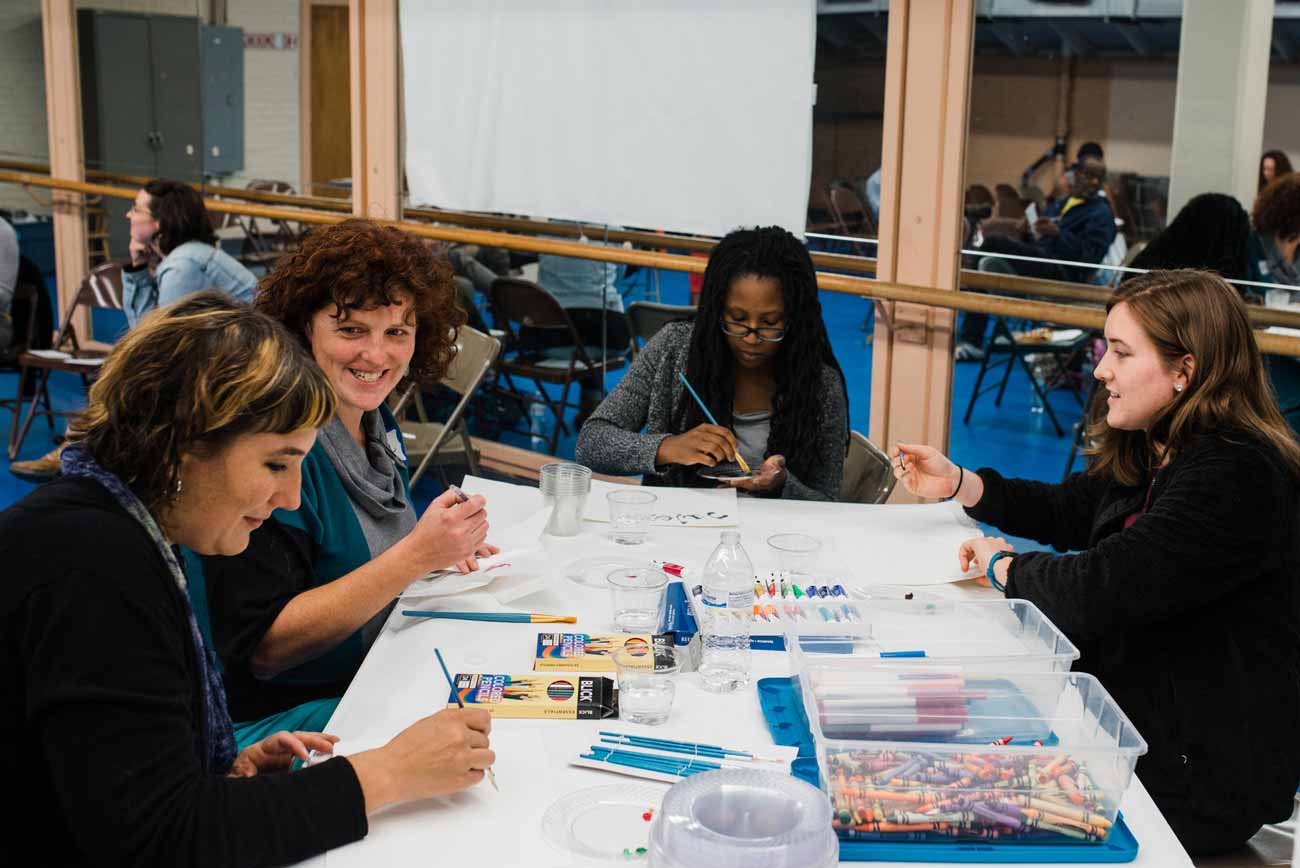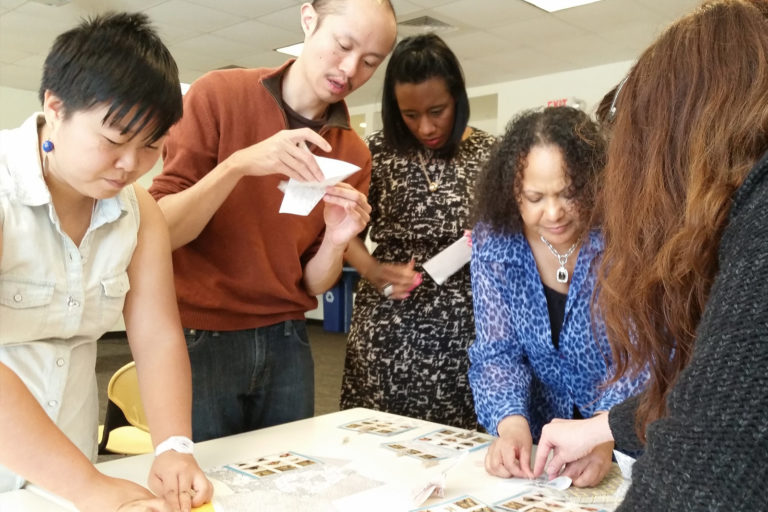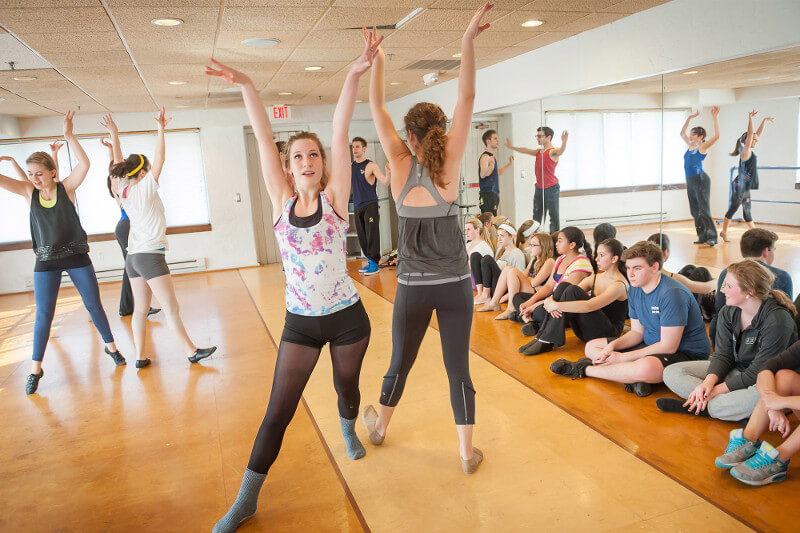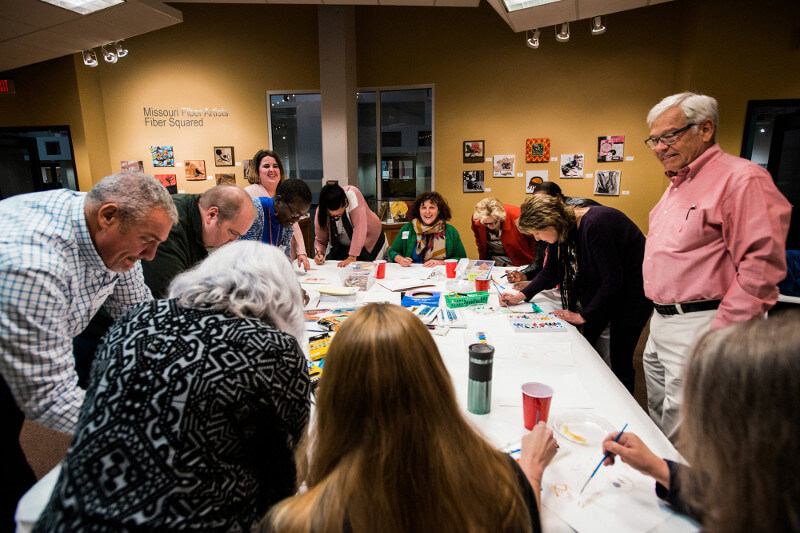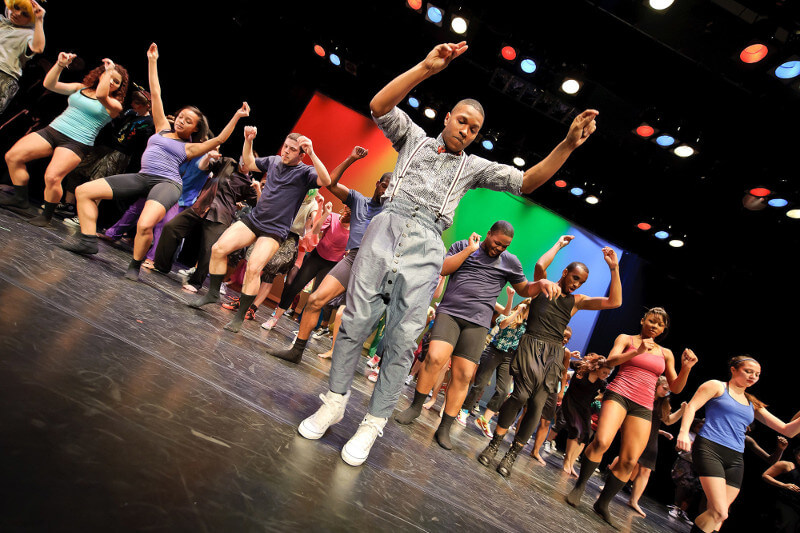Use the Vision to Forge New Partnerships, Collaborations and Alliances
- Actively seek opportunities to connect with, listen to, and support artists and arts organizations that it has not previously worked with
- Facilitate and support new connections between artists, arts organizations, and other organizations through the region
- Create opportunities and space for artists, arts organizations, and leaders and organizations from other sectors to convene
RAC, especially through its Community Arts Training (CAT) Institute, is considered a strong resource and leader in this work. The CAT Institute, founded in 1997, is a five-month training program that forges partnerships between artists of all disciplines, social workers, educators, community and social activists, and policy-makers. Its goal is to create relevant, impactful arts programs, particularly in under-resourced community settings, like neighborhood organizations, social service agencies, development initiatives, and after-school programs. More than 300 people have graduated from CAT, and these alumni stay connected to each other and utilize their training for the good of the community. Many of these CAT alumni said they saw the potential to strengthen the role of artists and cultural organizations as leaders and partners in civic engagement and social change.
“Would like to see the arts be a leader in getting people together in new ways. It’s hard to do, hard work. But if you work with the community, and it’s genuine, then it will work.”
– Community Leader Interview
Non-arts social service organizations that offer arts programs, such as Beyond Housing and Better Family Life, also talked about the impact the arts have on their efforts to develop more livable neighborhoods. They also said they want more opportunities to partner with the arts sector.
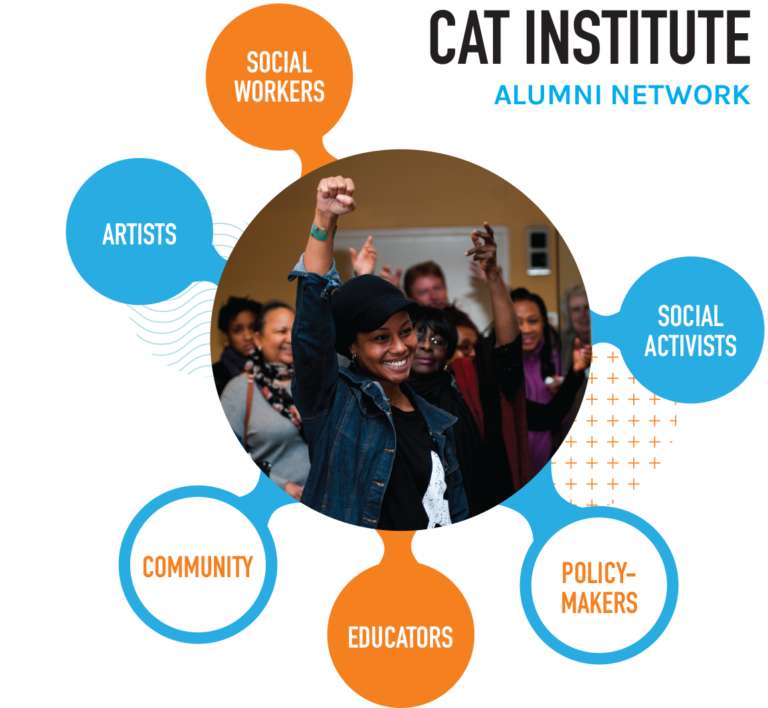
We heard many ideas about what such partnerships and collaborations might produce, including new ways to support more high-quality after school programming, affordable live-work spaces for artists created by converting vacated properties in divested neighborhoods, and new rehearsal, performance, and creation spaces that could be created by connecting artists and arts organizations with churches with under-utilized spaces. All these ideas focused on bridging divides to connect different sectors to the arts, and all emphasized the potential for mutual benefit.
“Find it odd that there is not more collaboration between corporations and individual artists. Artists should be embedded. If a corporation has empty offices, why not make them available to artists and writers? In trade, they could open up their studio, invite people to do brainstorming. Corporations would benefit in ways they don’t understand yet.”
– Community Leader Interview
Though many people felt that funding was a limiting factor in bringing these ideas to life, people agreed that working to clear that hurdle was worth the pursuit, because of the potential social benefits, for artists, arts organizations, individuals, communities, and the region.
RAC Artists
